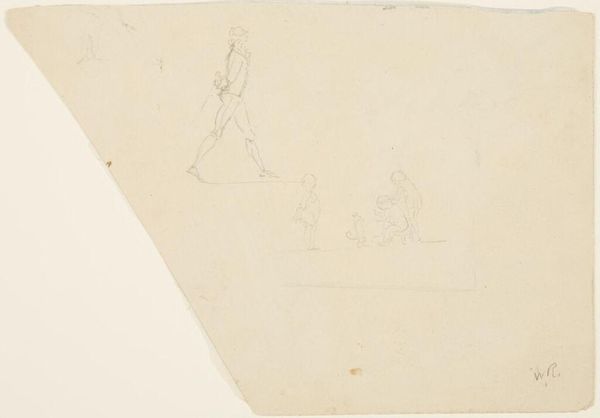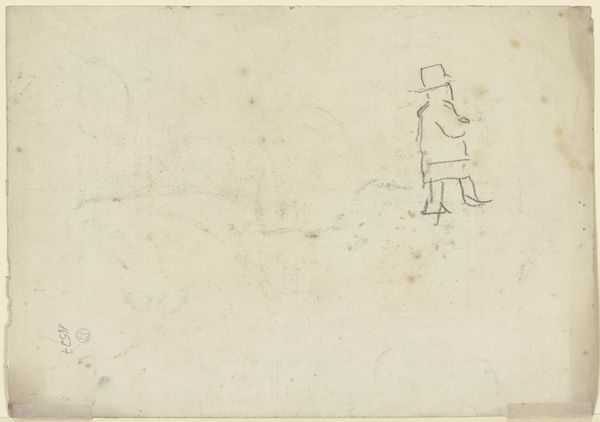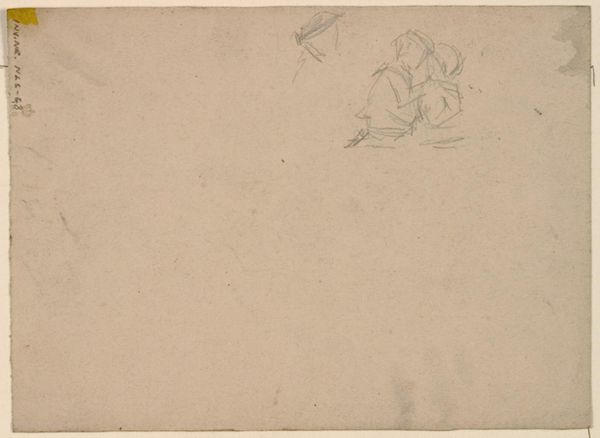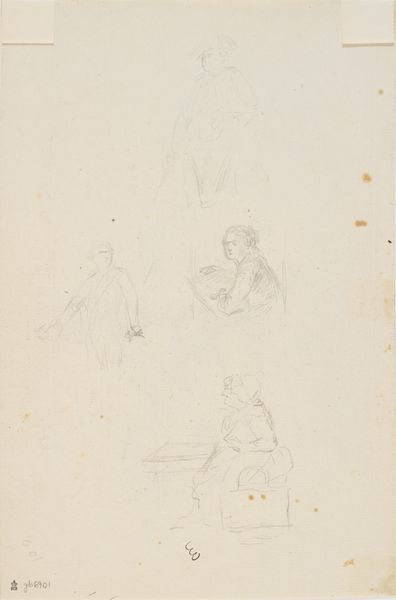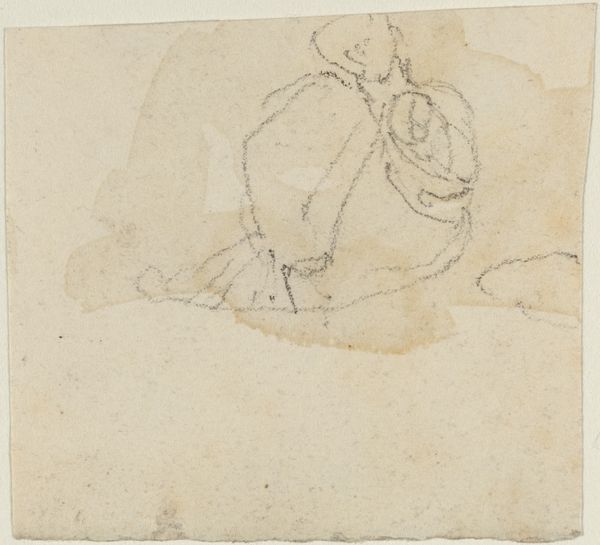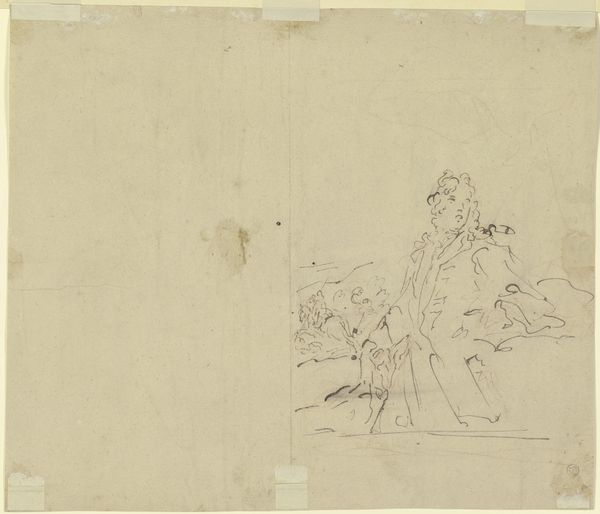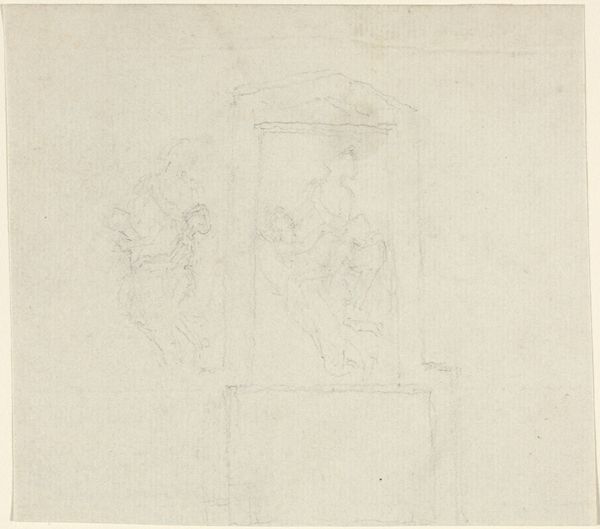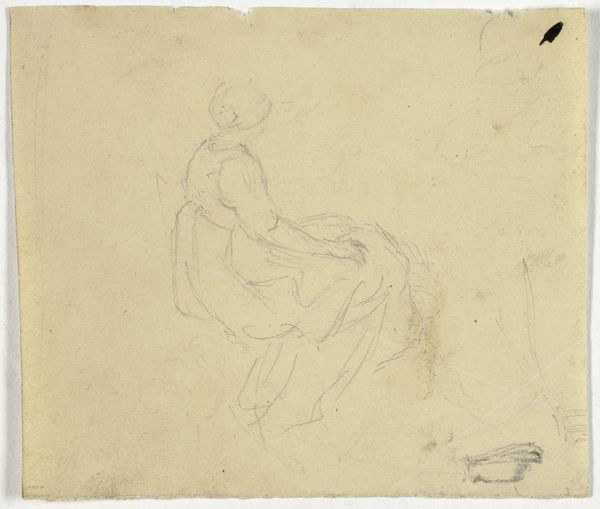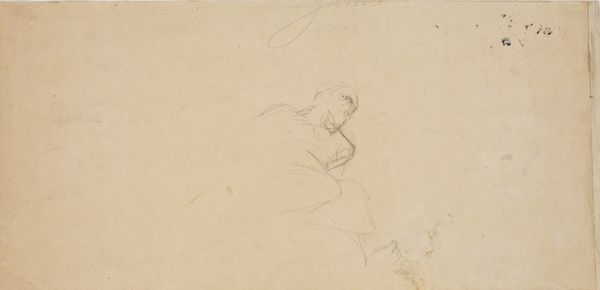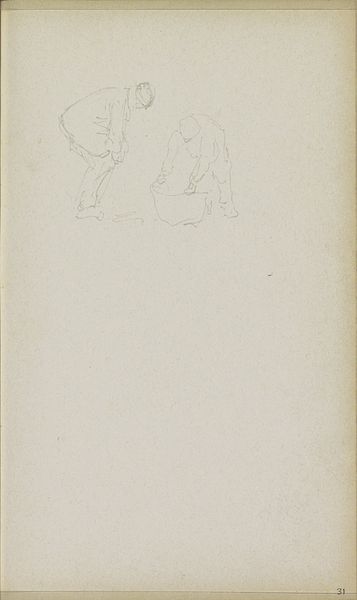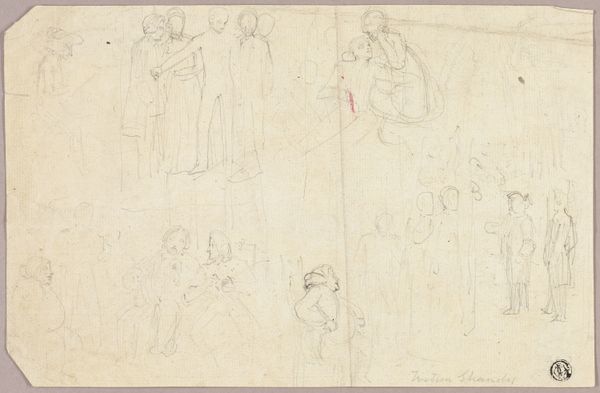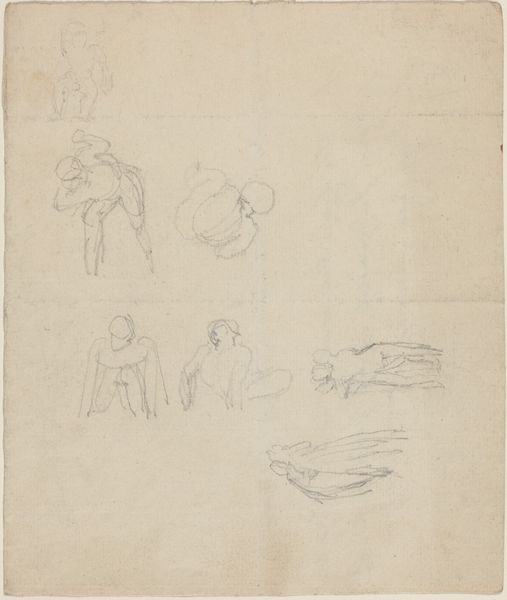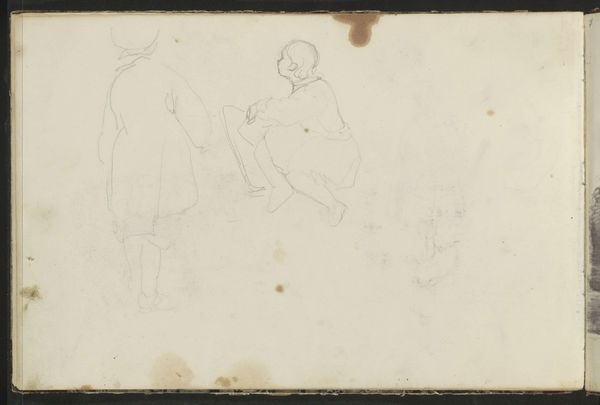
Männliche Figuren in historischer Tracht, in unterschiedlichen Körperhaltungen c. 1849
0:00
0:00
drawing, paper, pencil
#
portrait
#
drawing
#
16_19th-century
#
figuration
#
paper
#
german
#
pencil
#
history-painting
Copyright: Public Domain
Editor: This drawing, dating to around 1849, by Victor Müller, is titled *Männliche Figuren in historischer Tracht, in unterschiedlichen Körperhaltungen,* which translates to 'Male Figures in Historical Costume, in different postures'. It is done in pencil on paper and has a wonderfully tentative, exploratory feel. I am curious, as an art historian, how do you interpret this study of figures within the broader artistic landscape of its time? Curator: It's tempting to view this work as a straightforward historical study. But consider the socio-political context of 1849: Europe was in upheaval with revolutions. Artists like Müller were grappling with questions of national identity and historical narrative. Does the rather unpolished nature of this drawing perhaps challenge the grandeur normally associated with historical painting? Is the ‘historical costume’ a literal representation, or is Müller subtly referencing contemporary political issues through historical allegory? Editor: That's interesting. It makes you think about whether it is a romanticised vision or an attempt to bring those figures down to earth somehow? Curator: Precisely. The institutional forces shaping art also matter. Where might Müller have seen these costumes or models? Was he part of a particular academy or artistic circle influencing his choices? We need to consider the academies. His training played a significant role in the style and the choice of subject matter. Editor: I see. So, beyond just the surface representation, we're digging into the 'why' and the 'how' the art came to be within a specific environment. Curator: Exactly! We must examine the public role art played. History painting had a purpose: moral instruction and promoting values. The very choice to depict these figures, even in study form, carries a political and social charge. Does Müller subscribe to these norms, subvert them, or negotiate them? Editor: So, the drawing is not simply a sketch, but a potentially loaded statement on cultural identity at a politically charged time? That perspective adds so much depth. Thank you. Curator: My pleasure! Analyzing art within its socio-political framework makes these works, even seemingly simple studies, richer and more engaging.
Comments
No comments
Be the first to comment and join the conversation on the ultimate creative platform.
